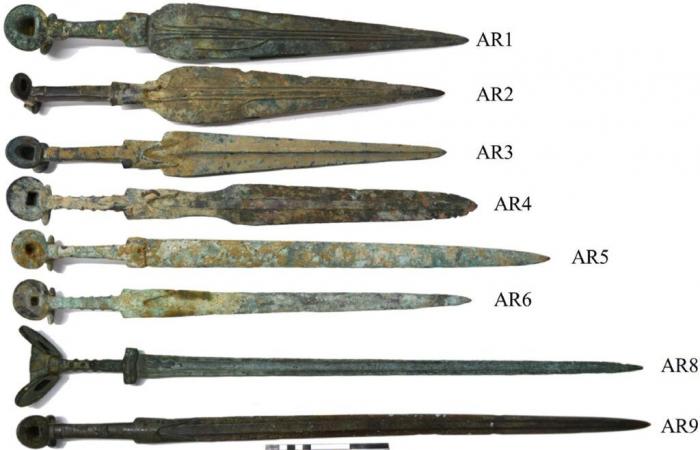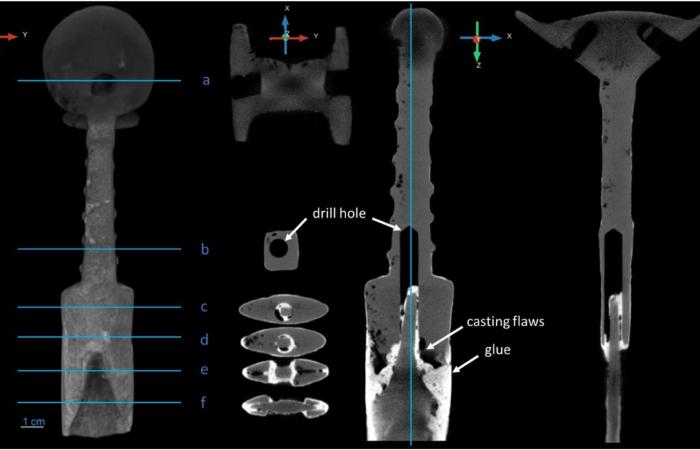Bronze swords dating from the Iron Age have just revealed a well-kept secret. Using a unique imaging technique, researchers have uncovered modern modifications to these weapons, proving their alteration to increase their value on the illicit antiquities market.
These swords are precious witnesses of the metallurgical know-how of ancient Iran. However, their alteration complicates the analysis of these techniques which date back 3,000 years, a pivotal era for the transition from bronze to iron.
Credit: Journal of Archaeological Science
The researchers, in collaboration with several institutions, used neutron tomography to analyze these weapons. Unlike X-rays, this technique makes it possible to better detect organic materials, such as glues, or hidden modern additions. The results are unequivocal: some swords have been modified recently, creating “pastiches” of ancient weapons. Fragments of bronze were added to original iron elements, thus distorting the history of the objects.
Analysis of the swords, which had been seized by British customs, revealed blatant indications of tampering. Holes drilled with a modern drill and even a broken piece of drill bit still embedded in one of the blades were discovered.
This practice highlights the dangers for world heritage and the difficulty of ensuring the authenticity of collections in museums. Such alterations hinder the understanding of ancient metallurgical innovations, particularly in Iran, the cradle of many metal techniques that are still poorly understood.
The blade is inserted into a drill hole (d) and secured with a rivet (f).
The study, led by Alex Rodzinka of Cranfield University, shows how bi-metallic objects, such as swords with a bronze blade and an iron handle, are essential for tracing transitions between metals. However, modern alterations confuse these discoveries.
Anna Fedrigo, scientist at the ISIS source, emphasizes the importance of neutron analyzes to detect these changes. The authenticity of many bronze weapons could now be called into question, revealing other pastiches.
The work of these researchers, although focused on a few objects, has global implications for the fight against antiquities trafficking. It also underlines the urgency of adopting advanced techniques to protect historical heritage, threatened by illicit practices.
What is a pastiche in the field of antiques?
A pastiche is a objet which combines ancient and modern elements. It is often created from fragments of original objects, to which we add materials or modern pieces to make it complete. These additions are made discreetly, in order to give the appearance of a artefact completely authentic.
These items are often designed to deceive buyers. Antique dealers or collectors may acquire them thinking they are authentic, when in fact they contain modern modifications or reconstructions.
Pastiches pose a serious problem for researchers. They complicate the study of ancient techniques because they mask the true nature of the objects, making it difficult to distinguish between original craft practices and contemporary additions.
Advanced imaging methods, such as neutron tomography, are crucial to detect these changes. They allow us to see beyond the surface and reveal the modern materials used in these deceptive assemblages.







